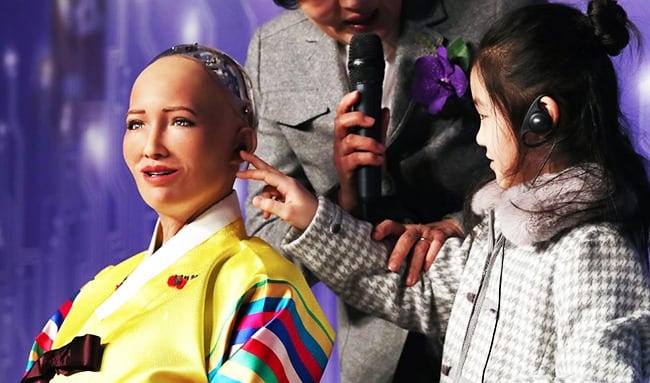
Editor: Philip Ragner | Tactical Investor
Elon Musk AI Robot: A Bold New Paradigm
Oct 19, 2023
Introduction
In technological innovation, few names hold as much weight as Elon Musk. Musk’s ventures have consistently pushed the boundaries of what is possible, from electric vehicles to space exploration. One of his latest endeavours, the development of a Tesla humanoid robot named Optimus, promises to usher in a bold new paradigm in robotics and artificial intelligence (AI). In this article, we will delve into the details of Elon Musk’s AI robot, exploring its potential impact, capabilities, and the questions it raises about the future of automation and human-machine interaction.
The Vision of Optimus: Reducing Labor Shortage and Enhancing Safety
Elon Musk’s announcement of Optimus in 2021 ignited a wave of excitement and speculation. Musk highlighted the robot’s potential to address the labour shortage and improve worker safety. With an intended height of 5’8″ and a weight of 125 pounds, Optimus is designed to assist in physical tasks that are monotonous, strenuous, or dangerous for humans. Musk envisions a future where robots like Optimus can take over menial and repetitive work, allowing humans to focus on more creative and fulfilling endeavours.
How does Elon Musk’s AI Robot Optimus aim to alleviate the labour shortage?
Optimus, the remarkable Elon Musk AI Robot, promises to alleviate the labour shortage through its advanced capabilities and potential to revolutionize the workforce. By assuming menial and dangerous tasks, Optimus can not only fill the gaps created by the scarcity of human labour but also enhance overall productivity and safety in various industries.
Elon Musk envisions a future where physical work becomes a choice, and Optimus plays a pivotal role in making this vision a reality. The robot’s primary objective is to shoulder the burden of repetitive and strenuous tasks, liberating human workers to focus on more creative and intellectually demanding endeavours. Optimus can increase efficiency, reduce human error, and free up valuable resources for innovation and higher-level decision-making by automating labour-intensive activities.
In manufacturing, logistics, and construction industries, where physical labour is demanding and often poses risks to human workers, Optimus can become a reliable and tireless assistant. Its ability to lift heavy objects and navigate challenging environments makes it an ideal candidate for tasks that require strength, precision, and endurance. Whether it is assisting in assembly lines, transporting heavy loads, or operating in hazardous conditions, Optimus can significantly contribute to overcoming the labour shortage challenges faced by such industries.
Moreover, Optimus’s integration with AI and Autopilot software, developed by Elon Musk’s Tesla, amplifies its potential to adapt and learn from its surroundings. The robot’s neural network, fueled by data from eight cameras, empowers it with perception and decision-making capabilities, enabling it to navigate complex environments and execute tasks precisely. This fusion of AI and robotics allows Optimus to continuously improve its performance, expanding its range of applications and enhancing its value as a labour-saving solution.
With the deployment of Optimus in various sectors, companies can achieve a more balanced division of labour, optimizing the allocation of human resources and capitalizing on the unique strengths of humans and robots. This symbiotic relationship between human workers and Optimus can increase productivity, improve working conditions, and create a more sustainable and efficient workforce.
Elon Musk’s AI robot, Optimus, represents a groundbreaking leap toward a future where automation and AI-driven technologies redefine the labour landscape. By addressing the labour shortage head-on and empowering human workers with the assistance of advanced robotics, Optimus paves the way for a paradigm shift in how we approach work, productivity, and the allocation of human potential.
Benefits of using robots like Optimus in the workforce
Physical Limitations: Balancing Safety and Public Perception
While Optimus’s physical capabilities may seem limited compared to our imaginations of superhuman robots, this deliberate design choice serves a purpose. Musk has emphasized that the robot’s physical limitations are intentional, ensuring it remains safe and predictable to interact with. By setting boundaries on its strength and speed, Optimus avoids the concerns often associated with autonomous machines depicted in science fiction. However, specific applications may arise where a robot with greater lifting capacity would prove advantageous.
The benefits of using robots like Optimus in the workforce are significant and multifaceted. Here are some key advantages:
1. Enhanced Efficiency and Productivity: Robots excel at performing repetitive and monotonous tasks with high precision, consistency, and speed. By offloading these tasks to Optimus and similar robots, human workers can focus on more complex and creative aspects of their jobs. This division of labour leads to enhanced overall efficiency and productivity.
2. Improved Workplace Safety: Optimus’s deployment in hazardous or physically demanding environments can significantly reduce the risk of workplace accidents and injuries. By assuming tasks that threaten human workers, such as heavy lifting or exposure to dangerous substances, robots like Optimus act as a protective shield, ensuring a safer work environment.
3. Increased Output and Quality: Robots work tirelessly and consistently, eliminating human factors like fatigue and human error. Their precision and accuracy lead to higher-quality output, reducing defects and waste. This can positively impact manufacturing, assembly, and other industries that require stringent quality control.
4. Scalability and Flexibility: Robots can be easily programmed and reprogrammed to adapt to changing production demands or new tasks. This scalability and flexibility enable businesses to respond quickly to market fluctuations, ramp up production, and meet customer demands efficiently.
5. Cost Savings: While the initial investment in robots like Optimus may be significant, they can lead to long-term cost savings. Companies can reduce labour costs, minimize downtime, and optimize resource allocation by automating labour-intensive tasks. The decreased risk of workplace accidents and injuries can also result in lower insurance premiums and liability costs.
6. Human-Robot Collaboration: Rather than replacing human workers, robots like Optimus are designed to collaborate with them. This collaboration augments human capabilities, allowing for a symbiotic relationship where humans and robots work together to achieve shared goals. By leveraging both strengths, businesses can unlock new levels of productivity and innovation.
It is important to note that the benefits of using robots like Optimus are not limited to a particular industry or sector. From manufacturing and logistics to healthcare and hospitality, integrating robots in the workforce can revolutionize various domains and unlock new possibilities for growth and progress.
However, it is crucial to balance the physical capabilities of robots and public perception. Optimus’s intentional physical limitations ensure safety and mitigate concerns surrounding autonomous machines. Nevertheless, there may be specific applications where a robot with greater lifting capacity would be advantageous, and it is essential to evaluate and address those requirements accordingly.
By harnessing the benefits of robots like Optimus while maintaining a considerate approach to their design and implementation, we can create a future where human workers and robots coexist harmoniously, driving productivity, safety, and innovation to new heights.
How do the physical limitations of Elon Musk’s AI robot affect safety and public acceptance?
Optimus’s physical limitations are crucial in enhancing its safety and public acceptance. Here’s how these limitations contribute to these aspects:
1. Predictability: By setting boundaries on its strength and speed, Optimus becomes more predictable in its movements and interactions with humans. This predictability instils a sense of safety and reassurance, reducing the likelihood of unexpected or uncontrollable actions that could lead to accidents or injuries. People feel more comfortable working alongside a robot that operates within known limits.
2. Reduced Physical Risk: Optimus’s physical limitations help mitigate the risk of human harm. Restricting its strength minimizes the chance of accidentally exerting excessive force that could injure or damage its surroundings. This aspect is critical in collaborative environments where humans and robots work. When people perceive that a robot poses a minimal physical risk, they are more likely to accept its presence and trust its capabilities.
3. Mitigation of Fear and Uncertainty: Public perception of robots, especially those depicted in popular culture, often involves concerns about machines overpowering or threatening humans. Optimus’s deliberate physical limitations help address these fears and uncertainties. Ensuring that the robot’s capabilities align with its intended functions and communicating its design choices makes it easier to establish trust and acceptance among the public.
4. Ethical Considerations: Imposing physical limitations on Optimus reflects a proactive approach to address ethical concerns related to using advanced robotics. It demonstrates a commitment to prioritizing safety, human well-being, and responsible technology deployment. This commitment can positively influence public perception and acceptance of robots in the workforce, as it shows a dedication to ethical considerations and promotes transparency.
5. Regulatory Compliance: The physical limitations of robots like Optimus align with existing regulations and safety standards. Compliance with these regulations is crucial for the wider adoption and acceptance of robotics in various industries. Optimus demonstrates its commitment to safety by adhering to established guidelines and encourages regulatory authorities and the public to view it as a reliable and responsible technology.
It is worth noting that while Optimus’s physical limitations contribute to safety and public acceptance, they are carefully balanced with its intended functions and the specific tasks it is designed to perform. There may be situations where different robots with specific capabilities are more suitable. Evaluating tasks, risks, and potential benefits is essential for selecting the appropriate robotic solutions for different scenarios.
Overall, by considering and addressing safety concerns, implementing appropriate physical limitations, and fostering transparency, Optimus and similar robots can enhance public acceptance and pave the way for their successful integration into the workforce.
What are the implications of deploying Optimus in Tesla’s factories?
The deployment of Optimus in Tesla’s factories can have significant implications for the company and its manufacturing processes. Here are some key implications:
1. Increased Efficiency: Optimus’s presence in Tesla’s factories can boost efficiency by automating repetitive and labour-intensive tasks. The robot’s ability to perform tasks with precision and consistency can lead to streamlined production processes, reduced cycle times, and improved overall efficiency. This increased efficiency can contribute to meeting production targets and fulfilling customer demand more effectively.
2. Enhanced Safety: Tesla’s factories can benefit from Optimus’s physical capabilities, particularly regarding safety. The robot can assume tasks that involve heavy lifting, repetitive motions, or exposure to hazardous conditions, reducing the risk of workplace accidents and injuries. By deploying Optimus in areas where safety is a concern, Tesla can create a safer work environment for its employees.
3. Workforce Augmentation: Optimus’s integration with Tesla’s workforce can lead to a collaborative environment where humans and robots work together. Rather than replacing human workers, Optimus acts as a valuable assistant, allowing employees to focus on more complex and intellectually demanding tasks. This workforce augmentation can lead to increased productivity and job satisfaction among Tesla employees.
4. Process Flexibility and Adaptability: Optimus’s programming and reprogrammable nature allow Tesla’s factories to adapt to changing production needs and optimize processes. The robot can be easily reconfigured to perform different tasks or adjust to variations in production requirements. This flexibility enables Tesla to respond quickly to market demands, product changes, and process improvements.
5. Innovation and Continuous Improvement: Optimus’s integration with AI and Autopilot software, developed by Tesla, can facilitate innovation and continuous improvement within the manufacturing processes. The robot’s ability to gather and analyze data, coupled with AI algorithms, can identify patterns, optimize workflows, and suggest process enhancements. This data-driven approach can drive innovation, efficiency gains, and quality improvements throughout Tesla’s factories.
6. Brand Image and Perception: Deploying advanced robotics like Optimus in Tesla’s factories can enhance the company’s brand image and perception. It showcases Tesla’s commitment to cutting-edge technology, innovation, and pushing the boundaries of what is possible. This association with advanced robotics can further solidify Tesla’s position as a leader in the automotive industry and a pioneer in transformative manufacturing practices.
It is important to note that deploying Optimus in Tesla’s factories also brings challenges, such as initial integration costs, training requirements, and potential resistance to change among the workforce. However, with proper planning, training programs, and effective communication, these challenges can be addressed and overcome, leading to the realization of the benefits and implications mentioned above.
Overall, the deployment of Optimus in Tesla’s factories holds the potential to optimize production processes, improve safety, foster collaboration, and reinforce Tesla’s reputation as an innovative and forward-thinking company.
How might the availability of Optimus impact various industries and sectors?
The availability of Optimus and similar advanced robots can have a transformative impact on various industries and sectors. Here are some potential implications:
1. Manufacturing and Assembly: Optimus’s deployment in manufacturing and assembly industries can significantly enhance productivity, efficiency, and quality control. The robot’s ability to perform repetitive tasks with precision and consistency can lead to accelerated production cycles, reduced errors, and improved overall output. It can also handle physically demanding tasks or pose safety risks to human workers, thereby creating a safer work environment.
2. Logistics and Warehousing: Optimus’s capabilities can revolutionize logistics and warehousing operations. The robot can automate material handling, inventory management, and order fulfilment processes, leading to increased efficiency and accuracy. It can navigate through complex environments, optimize storage space, and streamline the movement of goods, ultimately improving supply chain operations.
3. Healthcare: Optimus can contribute to the healthcare industry by assisting with various tasks. For instance, it can be programmed to transport medical supplies, deliver medications within hospitals, or aid in patient rehabilitation exercises. Optimus allows healthcare professionals to focus more on patient care by taking over routine tasks, improving efficiency and patient outcomes.
4. Agriculture: Optimus’s deployment in agriculture can revolutionize farming practices. It can be used for planting seeds, harvesting crops, or monitoring plant health. By automating these processes, Optimus can increase agricultural productivity, optimize resource utilization, and potentially address labour shortages in the industry.
5. Construction: Optimus’s physical capabilities make it well-suited for construction applications. It can assist with heavy lifting, material transportation, or repetitive construction activities. By collaborating with human workers, Optimus can improve construction site safety, increase productivity, and potentially shorten project timelines.
6. Service Industry: In the service industry, Optimus can be utilized in various ways. For example, in the hospitality sector, it can assist with tasks like cleaning, room service, or luggage transportation. In retail, Optimus can automate inventory management, assist with stock replenishment, or provide customer service support. These applications can improve operational efficiency, enhance customer experiences, and free up human workers for more personalized interactions.
7. Research and Exploration: Optimus’s capabilities can be valuable in research and exploration activities, such as space or deep-sea exploration. The robot’s physical limitations and adaptability make it suitable for conducting experiments, collecting data, or performing repetitive tasks in remote and challenging environments. It can support scientific advancements, reduce risks to human researchers, and expand our knowledge in various fields.
It is important to note that the availability of Optimus may require industry-specific adaptations and customization to meet the unique requirements of different sectors. Additionally, integrating robots like Optimus may lead to changes in workforce dynamics, requiring reskilling and reimagining job roles to maximize the benefits of human-robot collaboration.
Overall, the availability of robots like Optimus has the potential to revolutionize industries and sectors by enhancing productivity, efficiency, safety, and innovation. The specific impacts will vary depending on the industry, but the overall trend is a shift towards automation and augmenting human capabilities through collaboration with advanced robotics.
Navigating the Intersection of Elon Musk’s AI and Robotics: Key Challenges and Solutions
Integrating AI and robotics in the workforce brings forth several potential challenges that need to be addressed for successful implementation. Here are some key challenges:
1. Job Displacement: One of the primary concerns surrounding AI and robotics integration is the potential displacement of human workers. As automation replaces specific tasks, there is a risk of job loss, especially in industries heavily reliant on routine and repetitive work. It becomes crucial to ensure appropriate measures are in place to support displaced workers and facilitate their transition into new roles or industries.
2. Ethical Considerations: AI and robotics raise ethical questions regarding their use in the workforce. Privacy, data security, algorithm bias, and the impact on human dignity and autonomy must be carefully addressed. Organizations must establish clear guidelines and ethical frameworks to govern AI and robotics to avoid unintended consequences and ensure transparency and fairness.
3. Skills Gap and Training: Integrating AI and robotics often requires a workforce equipped with the necessary skills to operate, maintain, and collaborate with these technologies effectively. Bridging the skills gap and providing adequate training opportunities become critical for workers to adapt to new roles and seamlessly work alongside AI and robotics.
4. Technological Limitations: Despite advancements in AI and robotics, there are still limitations to consider. Robots may struggle with complex tasks that require human-like talent, adaptability, or decision-making capabilities. Ensuring that technology aligns with the requirements of specific industries and contexts is crucial to maximizing its potential and addressing limitations effectively.
5. Cost and Return on Investment: Implementing AI and robotics in the workforce often involves significant upfront costs. Organizations must carefully evaluate the return on investment, considering increased productivity, efficiency gains, and long-term sustainability. Balancing the initial investment with the anticipated benefits becomes essential for successful integration.
6. Human-Machine Collaboration: Effective collaboration between humans and machines is crucial for successful integration. Designing interfaces and workflows that facilitate seamless interaction, communication, and cooperation between humans and AI-powered systems is a challenge that needs to be addressed. Ensuring that humans remain in control, understand AI’s decisions, and intervene when necessary is vital for trust and acceptance.
7. Adaptability and Flexibility: Technological advancements require the workforce to be adaptable and flexible. Today’s relevant skills may become obsolete, and workers need to be prepared for lifelong learning and upskilling to keep pace with evolving technologies and job requirements.
Addressing these challenges requires a collaborative effort involving policymakers, industry leaders, educators, and other stakeholders. By proactively considering these challenges and implementing appropriate strategies, we can foster a successful integration of AI and robotics in the workforce that maximizes benefits while mitigating potential risks.
Elon Musk AI Robot: Final Thoughts
Elon Musk’s foray into humanoid robotics with Optimus represents a significant step toward a future where AI and automation play a central role in our daily lives. While there are still challenges to overcome and questions to address, the potential benefits of robots like Optimus in reducing labour shortages, enhancing safety, and augmenting human capabilities are undeniable. As technology advances, it is crucial to approach the integration of AI and robotics thoughtfully, ensuring that they align with human values and contribute positively to society.
In the coming years, the development and adoption of AI robots like Optimus will shape our understanding of human-machine interaction and redefine the boundaries of what machines can achieve. With Elon Musk at the forefront of this bold new paradigm, we can expect groundbreaking innovations and a future that blurs the line between science fiction and reality. Let us embrace this exciting journey as we explore the possibilities and navigate the opportunities and challenges AI robotics presents in the years ahead.
Exploring Similar Intriguing Stories

Investor Sentiment in the Stock Market: Riding the Right Wave

When is the Best Time to Visit Colombia? Uncover the Ideal Season

What Is Price to Sales Ratio in Stocks?: A Gem-Spotting Metric

What is Behavioral Psychology?: Secrets of Human Behavior

What’s a Contrarian?: Out-of-the-Box Thinkers and Action Takers

Mass Hysteria Examples in America: Let the Tales Unfold

What is Oleic Acid Good For: Unveiling Its Health Benefits

The Ultimate Guide to Finding the Best Time to Visit Colombia

Stock Market Crash History: Learn from the Past or Be Doomed

How to Invest When the Stock Market Crashes: Embrace the Fear, Buy the Opportunity

Third Wave Feminism is Toxic: Its Impact on America

A Crisis of Beliefs: Investor Psychology and Financial Fragility

Copper ETF 3X: Rock On or Get Rolled Over

Which of the Following Is True of Portfolio Diversification?

What is the Average Student Loan Debt in the US? Understanding the Crisis
Irrational markets and Foolish Investor: a perfect recipe for disaster
Stock Market Crash Myths and Realities


